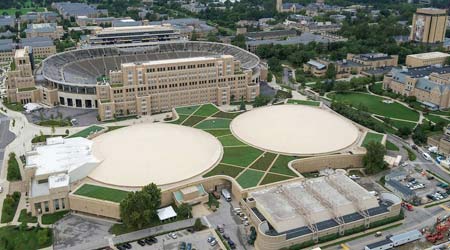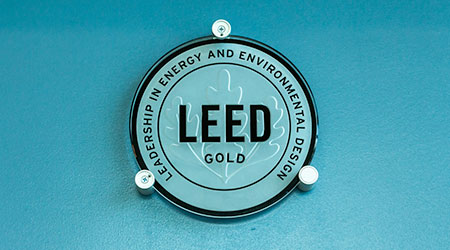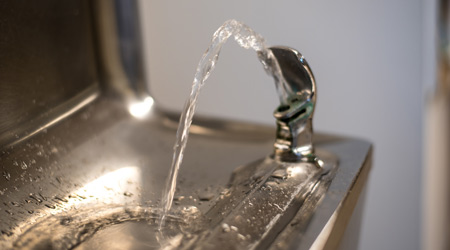
Green Roofs Continue To Grow, Some by Law
October 16, 2018
Green roofs have seen an increase in adoption since the 1980s, primarily for their ability to manage stormwater runoff, provide insulation, and mitigate the heat island effect.
The University of Notre Dame has just installed the largest green roof in Indiana, covering nearly 80,000 square feet on the Joyce Center, the school’s 9,149-seat multi-purpose arena. The extensive green roof involved more than 30,000 plant trays and 25 species of plants. Installation began in April and involved 25,000 staff hours to finish before the first football game, according to The Observer.
The university already has four other smaller green roofs, which are part of a larger initiative to reduce the campus’ carbon footprint.
Because of the benefit of green roofs, more municipalities have begun encouraging — and sometimes mandating — them on new construction. in January 2017, San Francisco became the first municipality to mandate green roofs. The city required that new rooftops be 15-30 percent vegetated, according to Governing. Other municipalities have enacted similar legislation, including Denver and Portland, Ore., where 100 percent of the roof must be vegetated in buildings with more than 20,000 square feet. Shy of mandates, 25 North American cities have policies that encourage green roofs.
More research is being conducted on factors that lead to the long-term success of green roofs. Researchers at the University of Portsmouth found that beneficial microscopic soil organisms present in the growing media at the time of installation often die due to a roof’s harsh environment, such as high winds and temperature. But these microorganism then re-establish, perhaps by riding air currents or being transported by birds. Researchers hypothesize that by maintaining a physical connection to ground-level soils, facilities could help ensure the health of the green roof biome, which helps sustain its longevity.
This Quick Read was submitted by Naomi Millán, senior editor, Building Operating Management.
Next
Read next on FacilitiesNet












